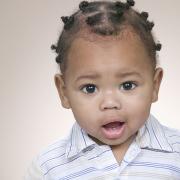 Sandra writes: My room this year is filled to the brim with two-year olds. Over the next year they will be transitioning from diapers to underwear and parents have begun asking about the right time to begin potty-training and how to do it.
Sandra writes: My room this year is filled to the brim with two-year olds. Over the next year they will be transitioning from diapers to underwear and parents have begun asking about the right time to begin potty-training and how to do it.
While it might not immediately seem related to potty training, the ability to dress and undress is one of the first steps towards this endeavor. When I first started at LifeWays I had a young friend who could never quite make it to the bathroom in time. Accidents were frequent and Miss Emily and I had frequent conversations about whether our young friend was ready for this transition. One morning in the play yard “Grace” said she needed to use the potty. We both scurried inside because I wanted to avoid sending home a bag of wet clothes (normally I let children in the building use the bathroom by themselves and Miss Jaimmie lets them back outside). Grace was able to remove her coat, hat, and mittens without a problem, but when we got to the bathroom Grace was not able to remove her pants. They were too tight! Between the snap and zipper and the Lycra in her skinny jeans she was not able to pull her pants down far enough to avoid an accident. I thought back to what she’d been wearing the other times she had accidents to consider if it was her clothing that had inhibited her success.
Learning to use the toilet is one of the most complex and developmental tasks of early childhood. Potty training (or toilet learning) requires specific abilities and both neurological and physical maturity. After a discussion with parents on the readiness of their child, a plan is put together to help the child with this next step in development. The ability for the child to recognize that he or she has a soiled diaper is one of the first steps toward this goal. I frequently have 2-1/2 or 3-year-old children who come to me saying they need a new diaper before I’ve made my morning check of diapers in the play yard. When this awareness of wet and dry occurs, the child has usually been able to stay dry in their diapers for several hours at a time. This tells me that in the next six months or so they will be transitioning to underwear.
Many of our bodily functions – eating, sleeping, or toileting – are ruled by habit. At 9:00 am my body tells me it is hungry and one reason this occurs is because I’ve been having snack at 9:00am for the last three years. Toileting is similar and by offering the children in my suite the opportunity to use the bathroom at the same time every day (9:30 am, 11:45 am, 12:45 pm, 3:00 pm), the children’s bodies adapt to the rhythm, resulting in greater success.
I often hear how great the child is doing at home, only to have accidents at LifeWays and, in my experience, the childcare center is one the last places that children will be accident free. Children also sometimes “regress,” often because of changes in their lives – a new baby in the home or weaning are two common examples. While it is more advantageous for the child to train in underwear (diapers and pull-ups can delay potty-training), there are times when I request a child wear a diaper at nap because they are a deep sleeper or wear a diaper late in the day because they have tried to hold in a bowel movement during the day.
It can often take up to a year to be consistently accident free. The process can frequently challenge a parent’s patience. I’ve experienced this with my own children, and having a sense of humor helps. Using the toilet is one of the first steps to our children’s independence that we can help facilitate, but over which we have limited control. By looking for signs of readiness, and working in partnership with parents, I am able to help the children in my suite make this important transition.
 Sandra Schmidt is a primary caregiver at LifeWays Early Childhood Center in Milwaukee, and she will graduate from the WI LifeWays training in August 2016. She is a mother to two grown boys and is also pursuing a Master’s Degree in Fine Arts at the University of Wisconsin-Milwaukee.
Sandra Schmidt is a primary caregiver at LifeWays Early Childhood Center in Milwaukee, and she will graduate from the WI LifeWays training in August 2016. She is a mother to two grown boys and is also pursuing a Master’s Degree in Fine Arts at the University of Wisconsin-Milwaukee.
